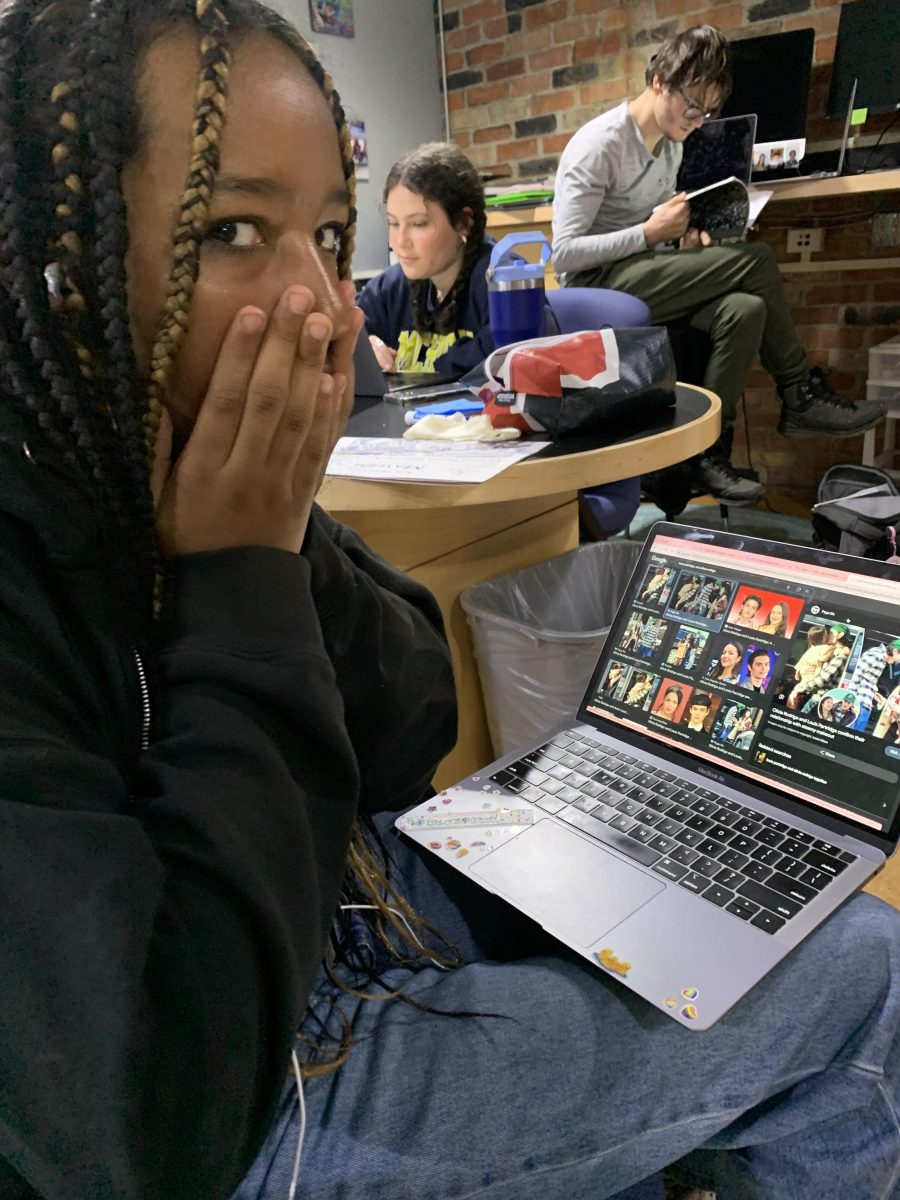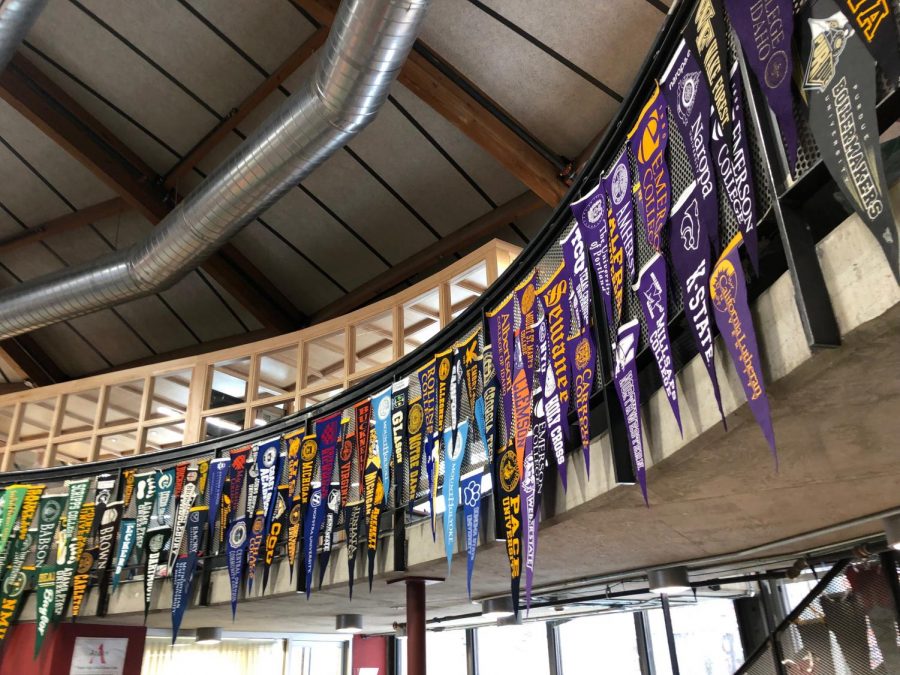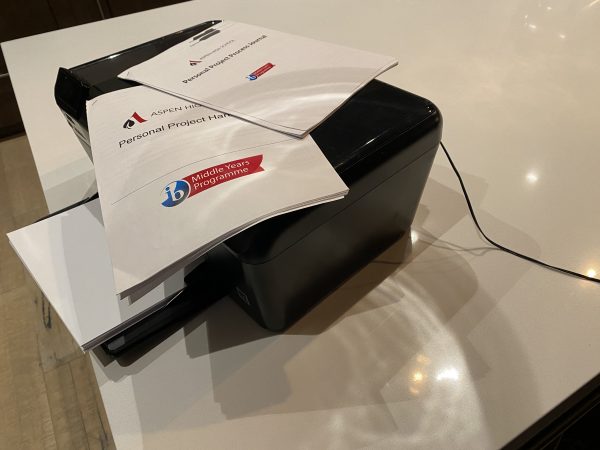Bad news for college applicants…
The wall of university flags that hang under the College Counseling department at AHS.
Nowadays, high school students are bombarded with scholarship opportunities and SAT practice tests the second they walk through the doors. This stems from the common knowledge that college is more challenging to get into as the years go by.
The reality is that the odds of getting into your first choice have decreased tremendously. Many different things play into the dropping acceptance rates.
AHS senior Cole Peterson believes that while college is becoming harder to get into, the process is also very sensationalized.
“The applications seem to expect more of you, and there is a hyper-competitiveness about it. Honestly, I feel like it might be harder, but it’s overdramatized,” Petersen said.
One of the reasons for this is that the pool of qualified applicants has gotten significantly larger. Back in the 1990s, it was typical for people to apply to only two or three schools maximum. Nowadays, it’s common for students to apply to seven or eight schools, which increases application numbers each year.
The Common Application also plays a part in the recent boost in applicants. The Common Application is an application that students may use to commit to over 750 different schools, ranging over 49 states and many international countries such as Canada and China. This helps to facilitate and shorten the application process for many students. It allows students to apply to multiple colleges at once, making the process more convenient.
Another reason for the drop in acceptance rates is the globalization of applicants and has lead to colleges becoming more selective. In today’s culture, it is not uncommon to think of college as a consumer good and in other developing countries, such as China, attending an American college earns you more status within your community. Most of the foreign candidates don’t need financial aid, thus establishing a higher appeal to universities. International students pay out-of-state tuition, encouraging an extra competitive in-state application system. Because colleges are looking to recruit more international and out of state students the pressure on in-state students increases dramatically.
Baylor University Regional Assistant Director of Admissions, Jan Kyster, believes that the recent globalization of applicants could be a contributing factor in the application process becoming more competitive.
“At Baylor, we evaluate students all the same whether an international student, an out-of-state student or a Texas student. However, I would say that with the increase in applications from international students, it probably has made it more competitive for US students in the college application process,” Kyster said.
With the number of applicants increasing, so does the number of students in need of financial aid. For some students, receiving financial assistance is a deciding factor in whether or not they will attend a particular university.
“We review students need-blind, meaning that we do not take into consideration a family’s ability to pay when we make an admission decision. However, at Baylor, we realize that attending a university is an investment and we help our students as much as possible with that investment. 91% of our students receive scholarships and financial aid,” Kyster said.
Over the last 20 years, acceptance rates have been cut in half, and the perception of college admissions has changed dramatically.
“Universities want genuinely kind, compassionate human beings who are passionate about something or have contributed positively in some way. Be yourself and the right college will come to you,” Petersen said.




























